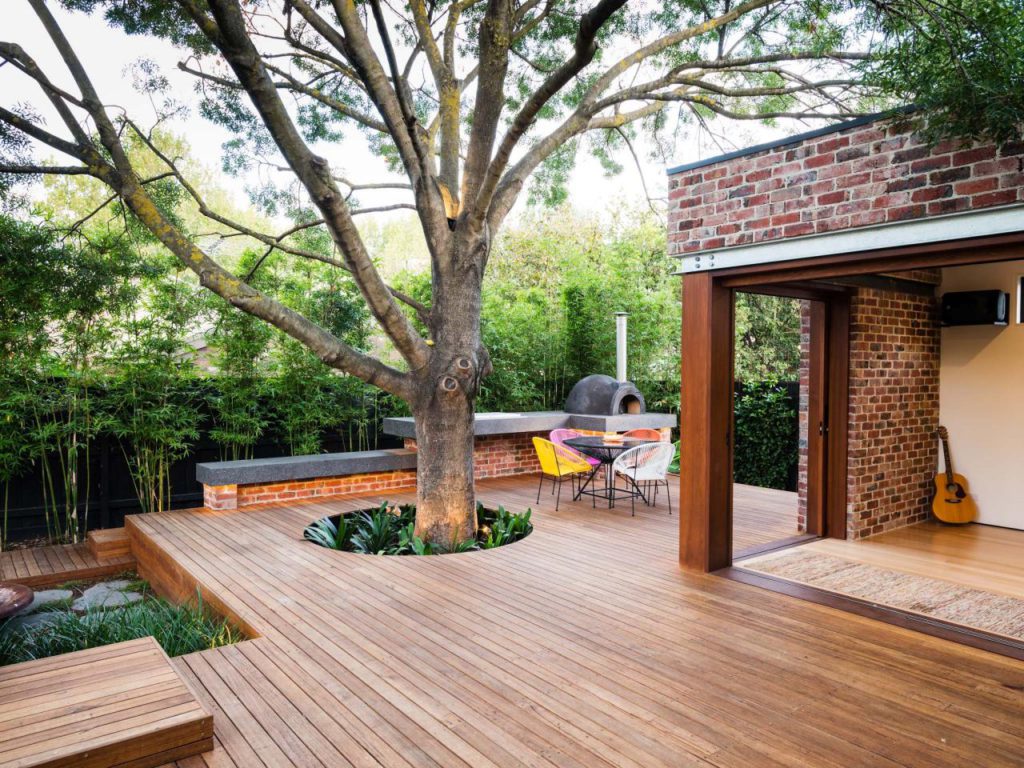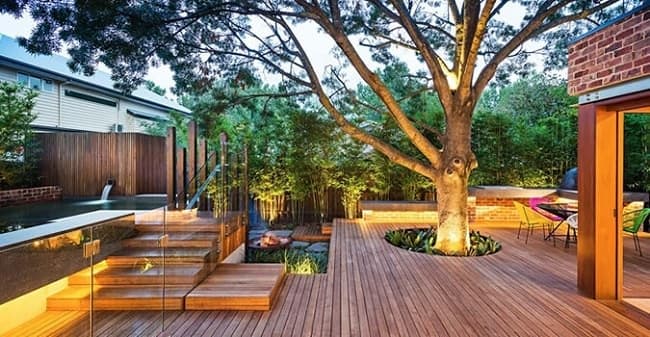Read on for more details on the pros and cons of a composite deck, as well as how it could fit easily within the needs of your home. The pros of composite decking include its environmental friendliness, minimum maintenance requirements, durability, and amazing longevity, especially compared with wood.
Pro-composites (wood mixed with plastic) are more durable than conventional wood, never need to be painted or stained, and are made with recycled materials. The flexibility of Eco Wood makes it a better material for decking than conventional wood.
Eco wood is a more flexible material that offers a variety of possibilities compared to that of an actual wooden deck.
Due to the weight of the composite materials, you need to build a stronger structure for the deck than what is required with natural wood. If you are starting a composite deck construction, you still have to use a wood that has been pressure treated in order to maximize the life expectancy of your structure. If you are using real wood as your decking material, you will have to stain and paint it periodically in order to maintain it.
Natural wooden decks may get damaged from using stains and staining. While ipe, redwood, and cedar wood decks are rot-resistant, Ipe decks still need periodic cleaning and periodically stained and sealed. Wood is a naturally sustainable material if harvested responsibly, but most decks use pressure-treated lumber, which includes harmful environmental toxins.
This benefit also means your decks are going to resist mold and mildew much better than products made from naturally occurring wood. These materials make composite decks nearly rot-proof, meaning you rarely have to sand, stain, and seal your boards in order to maintain their life span. If you opt for the Cap Product for Composite Decking, the boards are sealed with a plastic which can be molded or dyed to give it the multi-colored appearance of natural wood products.
Composite decking includes a roughly 50/50 mix of recycled wood fibers and recycled plastic. Composite decking is a type of decking material made of a mix of recycled wood and plastic waste, wrapped in a plastic sheet.
Composite Decking is a wood-like material in appearance, made of a mixture of plastic and wood fibers. Eco-friendly: The process for making composite decking uses mostly recycled materials. While the composition deck starts out green, deck boards cannot be recycled or used again in a composting manner, as wood cannot.

Because composite deck boards are made of recycled materials, which are otherwise hard to recycle, they decrease the amount of waste going into landfills and into the wider environment. Some suppliers also opt to use recycled wood chips, making composite decking both green and sustainable. Plus, after its useful lifespan, wooden deck boards can be reclaimed for other products, like mulch, or allowed to naturally decompose.
Eco-friendly decks are green because they make use of a waste product that could very well end up in the landfill. A third environmentally-friendly aspect of eco decks is the fact that an eco-friendly timber deck cleaner or timber floor cleaner is available, in contrast to the environmentally-harmful chemicals used for cleaning wood decks. The primary benefit of an eco deck is that it is made of recycled materials, like plastic bags and bottles.
The total material cost of an eco deck is higher than if you chose to use wood. The cost difference is wiped away once you factor in the amount of time and energy that wooden decks take to maintain, and the fact that they tend to require repairs.
For some, that is not so much a concern, since they weigh the environmental benefits, the lack of maintenance, and the longevity of environmentally friendly decks against a higher upfront material cost.
Before embarking on such a crucial project, it is important to be aware that the options of decking has grown in recent years, which has brought about a wealth of new choices of synthetic plastics and timber products to build a deck with. Wood alternatives such as PVC and WPC deck materials means you have a lot more options at your disposal right now.
Ipe wood also shrinks and expands less than other decking materials. This material has a lower heat-retention capability than its plastic and composite counterparts. When it comes to building a deck, Ipe Wood is usually a top choice because of its natural beauty, unmatched strength, and extreme longevity.
If the decking you select is capped, the boards exterior is given a plastic covering in the production process, which makes it resistant to fading and stains as well. As long as you apply some water and mold-resistant cleaning twice per year on the capped composite decking, you should be able to keep the quality of your deck even as it grows mold or mildew over time.
Even once you have completed all this maintenance, damage from water or insects can render a fully wooden deck unsafe, necessitating expensive repairs.
Plastics and wood fibers combined together create great decking, but recycling is nearly impossible. This environmentally-conscious solution means 95% of your composite decking is made of sawdust, chipped and fibered wood, wood pallets, and a few plastic items.
